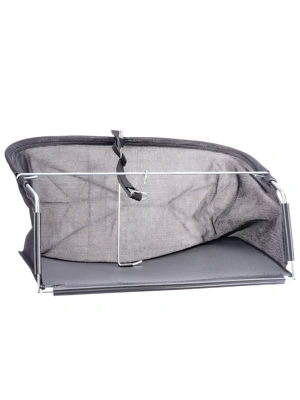4 Easy Ways to Improve Your Lawn

Most people think that to have a nice lawn, you need to apply lots of fertilizer, pesticides, herbicides and water. But in most parts of the country, it's actually not that difficult to grow a healthy carpet of grass. The problem is that most turf is growing on a thin layer of poor soil that contains little organic matter or beneficial soil life. To establish a healthy, low-maintenance lawn, you need to work from the soil up.
-
Aerate
Foot traffic and lawn machinery can compact the soil under your lawn, creating a difficult environment for grass roots and soil microbes. Air passages in the soil are necessary in order for water, air and nutrients to move down into the root zone. To loosen hard, compacted soil, you can use a hand-held or machine-powered aerator to remove small cores of soil. You can also strap on a pair of aerator sandals and walk around your yard. Spikes on the bottom of the sandals create tiny passageways for air and water. Avoid future compaction by minimizing foot and machinery traffic, or by creating permanent walkways.
-
Reduce thatch
Thatch is a layer of dead grass and grass roots that has accumulated on top of the soil surface. If this layer gets to be more than about a half inch thick, it begins to block the flow of air, water and nutrients. Grass roots start to grow along the soil surface rather than down into the soil. These roots become intertwined and form a dense mat. A lawn with a severe thatch problem has little drought tolerance and becomes susceptible to a host of pest and disease problems. Dead patches of lawn can signal thatch problems. You may also notice a spongy feeling when you walk across the lawn.
It is not necessary — or even desirable — to remove all of the thatch. A thin layer serves to insulate and protect the root zone. If you have a severe thatch problem, correct the problem incrementally to avoid damaging the lawn. Minor thatch accumulations can usually be removed by raking vigorously with a steel-tine rake. For severe problems, consider renting a mechanical dethatching machine. Early fall is the best time for dethatching. Once the thatch has been reduced, you can prevent future buildups by reducing the amount of fertilizer you apply, and avoiding frequent, shallow irrigation.
-
Fertilize
Turf, like other garden plants, depends on healthy soil to thrive. By applying pelletized compost and a slow-release organic fertilizer, you will encourage grass roots to penetrate deeper into the soil, and will also stimulate biological activity. Healthy, biologically-active soil has the texture and trace nutrients plants need to resist stress, disease and insect damage. If you live in the northern half of the U.S., early fall is the best time to fertilize. This gives cool-climate grasses time to "beef up" before winter. In the southern half of the U.S,. warm-climate grasses predominate. These grasses should be fertilized lightly, several times between early spring and late summer.
-
Mow high
The roots of a grass plant tend to grow about as deep as the blades are high. To maintain a healthy root system that can resist heat and drought, do not mow your lawn shorter than about 2". For even more drought resistance and to help shade out weed seeds, try setting your mower even higher, so your lawn is no less than 3" long.
Last updated: 03/11/2024
Print this Article:
Related items
Get the Dirt
Stay up to date on new articles and advice. Please fill out the information below.












